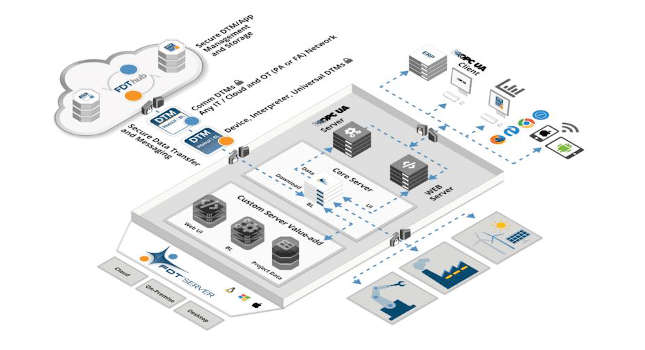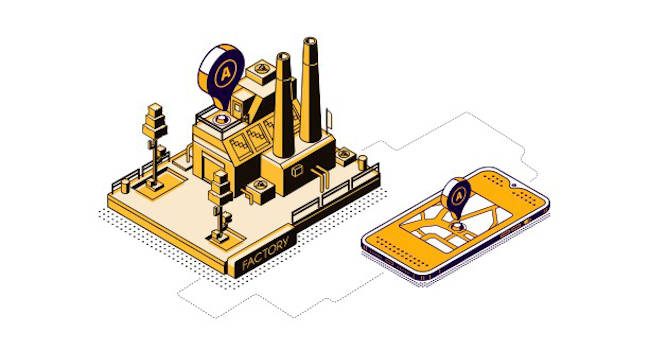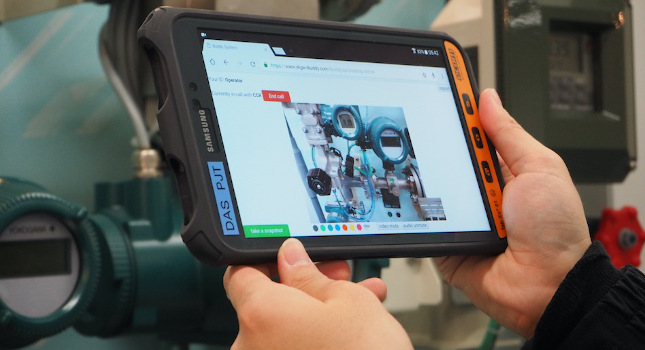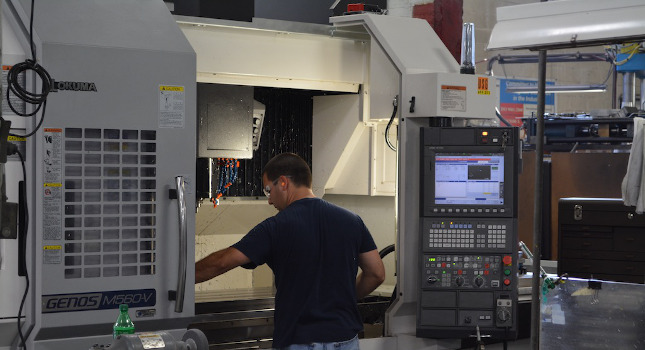Customized applications can help industrial organizations manage field devices and reduce overall operating and maintenance costs.

Industrial organizations must find ways to effectively manage field devices and reduce overall operating and maintenance costs. They need to monitor the status of critical assets, view equipment health analytics on real-time dashboards, and automate actions based on predictive insights.
Experience has shown that easily customized applications help in connecting, informing and empowering the industrial workforce so they can make better decisions. Automation stakeholders can utilize many third-party software developer toolkits and apply OPC Unified Architecture (UA) to create apps leveraging the data available in the FDT 3.0 IIoT server (FITS) application.
Collaborative evolution advances digital transformation
Since 2014, the FDT Group and OPC Foundation have collaborated to provide greater access to critical information throughout the industrial enterprise. The FDT standard is the hub of real-time information from tens of millions of device type manager (FDT/DTM)-enabled devices installed in the field, while the OPC UA standard provides an infrastructure to make this information available to thousands of enterprise applications and platforms.
Another strength of the FDT approach is that it takes care of the different networks in the automation architecture and presents a common model for field devices. Otherwise, the user is required to access the programmable logic controller (PLC) or distributed control system (DCS) to gather network and device information and map tags to OPC UA. With the FDT 3.0 solution, the FDT server sits at a peer level to the PLC or DCS and has direct access to all installed devices without the need for intervention or changes to the control environment.
In general, the flexibility of this architecture achieved through harmonization of data in the built-in FDT 3.0 OPC UA information model allows access to all devices from different vendors using a variety of bus protocols and networks to communicate across the entire network hierarchy. The FDT server provides the OPC UA interface that enables secure data transport over the corporate intranet or the internet through an encrypted connection between the server, clients and mobile devices, including apps.
Next-gen FDT/OPC UA IIoT ecosystem assists developers
The FDT 3.0/OPC UA IIoT ecosystem, consisting of an FDT server and DTMs, delivers universal device integration and a data-centric platform to mobilize the industrial workforce with modern and diverse deployment options, including cloud, enterprise, edge, on premise, and single-user desktop environments.
Within the FITS architecture, the platform-independent FDT server serves as the pivotal Industrial Internet of Things (IIoT) hub empowering the intelligent enterprise. It is built on top of application business logic that manages all device DTM instances. The FDT server includes a web services portal allowing access from authenticated mobile devices or any major browser, along with an OPC UA interface for information technology/operational technology (IT/OT) convergence and enterprise access in the process, hybrid and discrete automation sectors.
A key feature of the FDT 3.0 standard is that all FDT servers and DTMs automatically provide full OPC UA support without additional effort or coding. This means any authorized OPC UA client can browse the project structure in the FDT server to locate device-specific, real-time information. There is easy integration of live plant floor data into apps, dashboards and manufacturing execution systems without the need to touch the DCS or PLC configuration.
Users have access to this information through a built-in and fully “wired” OPC UA server within the FDT server common components developer toolkit. The same holds true for DTM common components, as OPC UA is auto-enabled for DTMs. No additional coding or work is needed in either case.
As part of the FDT 3.0 solution, standard integration of information provided by DTMs into the FDT/OPC UA Information Model optimizes advanced device diagnostics, configuration and remote asset management. This information model enhances the management of networks and devices, helping to optimize the enterprise by giving access to data without the need for protocol-specific handling, providing support for a wide range of devices.
OPC UA apps add flexibility to device data
Third-party developers have begun to develop toolkits to write apps that can help the IT and OT workforces’ function more effectively by having device-specific, real-time data available at their fingertips on mobile devices. OPC UA’s robust capabilities can be used to build a wide range of custom apps leveraging the new FDT 3.0 IIoT server.
Thanks to the versatility of the FDT 3.0 architecture, anyone can create customized apps to meet their needs based off the available diagnostic data – whether it is a customized Key Performance Indicator (KPI) dashboard or an app tailored to a specific family of devices. These apps offer a new model for providing a customized view of production data via the flexibility of the FDT 3.0 architecture.
Due to implementation of the OPC UA companion specification for FDT, FDT 3.0 applications can access device DTM interface data via any authorized OPC UA Client. This allows the DTMs to be integrated in applications in which OPC UA is used for data exchange or for executing device-specific functions.
Automation suppliers and end users can develop customized apps to access device data in the FDT 3.0 server environment. Third-party toolkits, available for a wide variety of platforms and languages, save developer teams from having to become experts on the OPC UA architecture and eliminate the laborious steps necessary to create an OPC UA Client. Rather, developers can focus on customization aspects including acquiring and presenting their data.
The development of custom apps covers a broad spectrum of use cases in the areas of production operations, asset monitoring and equipment maintenance, among others. For example, with the FDT server solution integrated with a native OPC UA server, a remote asset monitoring application can be created to monitor the health of a field device on a different network and to alert technicians if there are abnormal conditions requiring immediate attention.
Developers can also create performance dashboard apps for manufacturing facilities, which employ OPC UA to obtain relevant OT and production data. On the IT side, the availability of real-time data from OT systems allows for the creation of custom reports based on KPIs to help management better evaluate operational productivity, standards compliance, etc.
Communication model enables real-time data access
Thanks to the FDT/OPC UA information model, users have access to real-time data to make better real-time decisions. The data is harmonized within the information model and presented in a logical, defined and uniform manner. Even device-specific information is provided in a standardized way while still customizable based on individual application requirements. The look-up of information is the same for users of all clients, even though the devices may be significantly different. The FITS architecture benefits from a client-server and a publish-subscribe (PubSub) communication model approach. Users have the flexibility to choose the method that best fits their needs.
Client-server
The FDT 3.0 OPC UA server supports a client-server-based request-response communication mechanism between the OPC UA client and generic client applications. This approach makes the full range of information model access available via services and, in doing so, follows the design paradigm of service-oriented architecture (SOA), in which a service provider receives requests, processes them and sends the results back with the response.
Publish-subscribe (PubSub)
Going forward, the Publish-Subscribe (PubSub) communication model will provide an alternative mechanism for data and event notification with FDT 3.0. While in client-server communication each notification is for a single client with guaranteed delivery, PubSub has been optimized for on change-only, one-to-many configuration. The PubSub approach is essential for secure multicasting, one-to-many publishing, machine-to-machine communication, dynamic network relations, and a number of additional scenarios.
Enabling the server with PubSub communication reduces communication traffic between asset health monitoring applications and the server application, thus improving performance and making the solution scalable to IIoT requirements. Remote monitoring applications will be able to monitor asset health on a different network in real-time, using bridging protocols like AMQP and MQTT.
Flexible architecture benefits automation
From a broad perspective, the global automation community will benefit from the flexibility of the new FDT 3.0 (FITS) architecture, which supports production data customization for the IT and OT worlds within industrial manufacturing—even though these domains have different interests and requirements. The FITS solution optimizes the connection of diverse automation systems and devices, delivers complete interoperability across current and emerging standards, and supports the convergence of the business information and plant operating technologies. Best of all, the enhanced FDT 3.0 architecture is scalable to suit the needs of a single manufacturing facility or an entire industrial enterprise.
Automation suppliers and end users can take advantage of ongoing FDT technology advancements to write customized apps that leverage the rich data available in the FDT 3.0 OPC UA server. All the toolkits, information and demos required for app development and testing purposes are openly available to interested stakeholders.
For automation vendors, the FDT 3.0 solution establishes an architecture making it easy to provide a DTM that can be used for integration with service tools as well as creation of a digital twin with accurate information about the supplier’s device.
By establishing a single point of access for device data, the FDT IIoT ecosystem provides a comprehensive and consistent source of information for different service and operation use cases within plant or factory production systems.
This article originally appeared on FDT Group’s website. FDT Group is a CFE Media content partner. Edited by Chris Vavra, web content manager, Control Engineering, CFE Media and Technology, [email protected].


